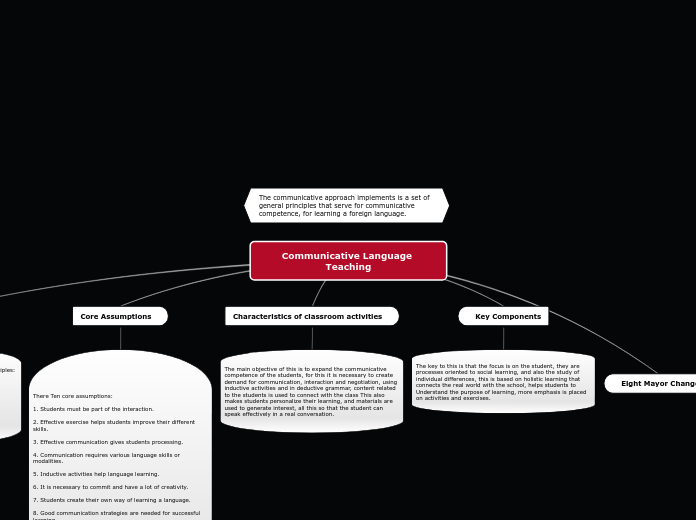
The application dependes the next principles:
1. Depending on the teaching context.
2. The age of learners.
3. The learners level.
4. Students goal
There Ten core assumptions:
1. Students must be part of the interaction.
2. Effective exercise helps students improve their different skills.
3. Effective communication gives students processing.
4. Communication requires various language skills or modalities.
5. Inductive activities help language learning.
6. It is necessary to commit and have a lot of creativity.
7. Students create their own way of learning a language.
8. Good communication strategies are needed for successful learning.
9. The teacher is a facilitator.
10. The classroom is a place where students learn through collaboration and sharing.
The main objective of this is to expand the communicative competence of the students, for this it is necessary to create demand for communication, interaction and negotiation, using inductive activities and in deductive grammar, content related to the students is used to connect with the class This also makes students personalize their learning, and materials are used to generate interest, all this so that the student can speak effectively in a real conversation.
The key to this is that the focus is on the student, they are processes oriented to social learning, and also the study of individual differences, this is based on holistic learning that connects the real world with the school, helps students to Understand the purpose of learning, more emphasis is placed on activities and exercises.
Learner Autonomy
Social Nature of Learning
Curricular Integration
Focus on Meaning
Diversity
Thinking Skills
Alternative Assessment
Teachers as Co-learners